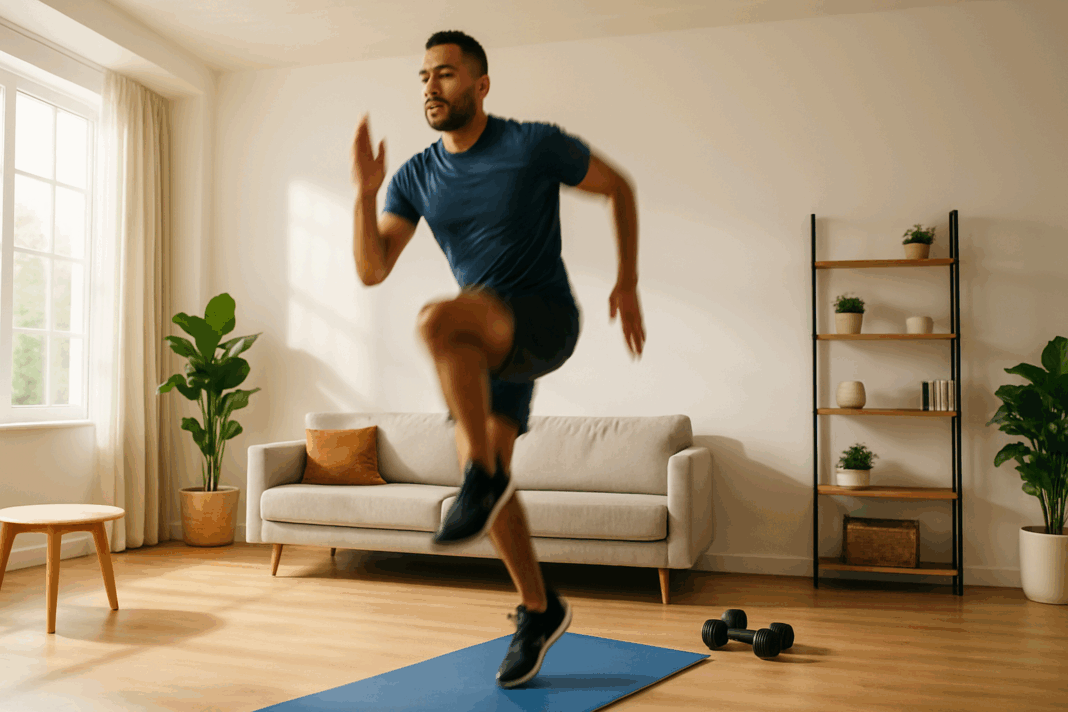Introduction: Why At Home Cardio Workouts Matter for Heart Health and Endurance
In today’s fast-paced world, prioritizing heart health and physical endurance is essential—but finding time for the gym isn’t always realistic. That’s where at home cardio workouts come in. Not only are they accessible and cost-effective, but they also offer a powerful way to strengthen your heart and build stamina without stepping outside your front door. With the right knowledge and a little motivation, cardio exercises at home can be just as effective as those done in a traditional gym setting. Whether you’re trying to understand how to strengthen your heart muscle, seeking good cardio exercises, or simply wondering how to get heart rate up at home, this guide provides practical, medically-sound advice to help you get started.
You may also like: Smart Nutrition Choices for a Healthier Lifestyle: What to Know About Whole Grain Rice and Whole Wheat Rice
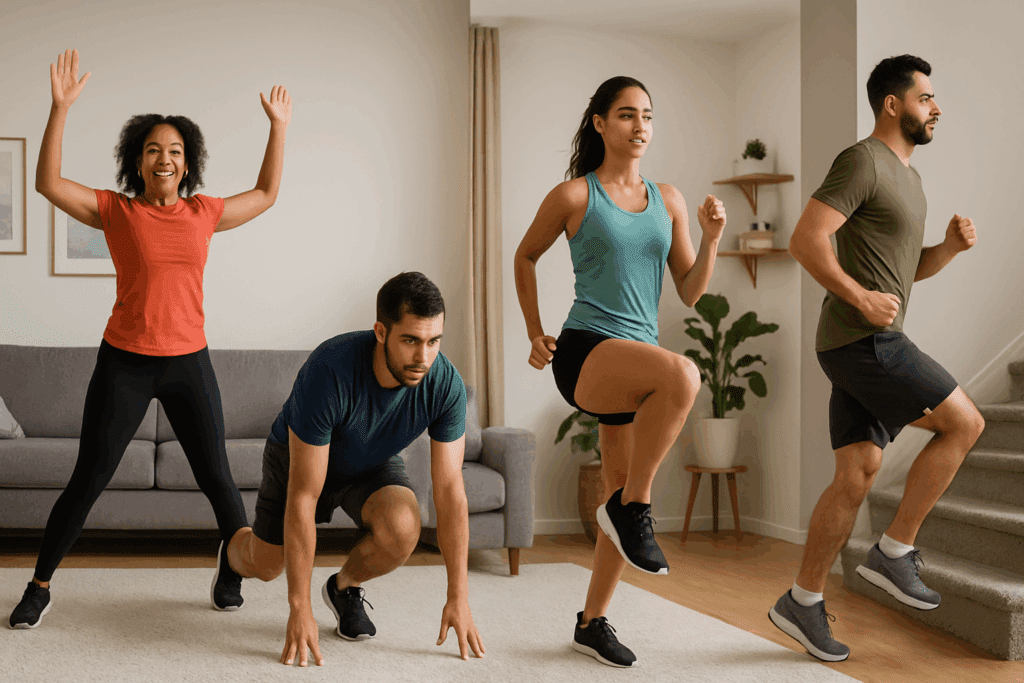
The Science Behind Cardio: What Are Some Cardiovascular Exercises and Why Do They Work?
Cardiovascular exercises, commonly referred to as cardio, are physical activities that increase your heart rate and improve the function of your heart, lungs, and circulatory system. Traditional forms of cardio include running, cycling, and swimming, but modern home-based adaptations such as high-knee marches, jumping jacks, and burpees offer the same benefits with added convenience. These forms of cardio improve oxygen utilization, regulate blood pressure, and support weight management. Even simple movements like stair-climbing or dancing can function as a cardio routine at home when performed with the right intensity.
For those exploring how to get a cardio workout at home, the key is consistency and progressive effort. Your body responds to cardio by improving stroke volume (how much blood your heart pumps per beat) and decreasing resting heart rate. This means that over time, your cardiovascular system becomes more efficient, reducing your overall risk for heart disease. Understanding the importance of these adaptations can motivate long-term commitment and empower you to use cardio at home as a tool for preventive health.
How to Strengthen Your Heart Muscle With Cardio at Home
The heart is a powerful muscle, and just like any other muscle in the body, it grows stronger with regular use. Cardio workouts challenge the heart to pump blood more efficiently. As your fitness improves, your heart doesn’t have to work as hard to circulate blood. This is why consistent cardio exercises lead to a lower resting heart rate—a clear sign that your heart muscle is getting stronger.
To strengthen your heart muscle, choose cardio exercises that elevate your heart rate into a target zone that matches your age and fitness level. This can include brisk walking, climbing stairs, or following a high-intensity fitness cardio workout online. These exercises stimulate cardiac output and encourage healthy circulation. Many people ask, “can you strengthen your heart with cardio alone?”—and while strength training and good nutrition play supporting roles, cardio remains the cornerstone for heart health.

Forms of Cardio That Fit Every Lifestyle
One of the most exciting aspects of cardio at home is the wide variety of options available. Whether you prefer short bursts of movement or longer, steady-paced workouts, there’s something to match every preference and fitness level. Classic forms of cardio like jumping rope, running in place, or high knees are extremely effective and require no equipment. More structured options, like dance cardio or martial arts-inspired routines, offer the additional benefit of full-body engagement.
Standing cardio exercises are particularly useful for those with joint sensitivity or limited space. Movements like step touches, arm swings, and toe taps performed continuously for 20 to 30 minutes can effectively raise your heart rate while remaining low-impact. These routines are excellent for individuals wondering how to get heart rate up at home in a sustainable and joint-friendly way.
Creating a Home Cardio Program That Works for You
The most successful home cardio programs are those that you’ll actually stick with. To make this possible, structure your routine to match your current fitness level, time availability, and personal preferences. A basic home cardio program might include a warm-up of dynamic stretches, 20 minutes of alternating standing cardio exercises and more intense intervals (like jumping jacks or burpees), and a cooldown of static stretching.
Variety is also essential. Alternate between high-intensity workouts and lighter sessions to allow for recovery. For example, if you do a challenging fitness cardio workout on Monday, opt for a gentler cardio session at home on Tuesday, such as walking in place while watching television. Balancing intensity with recovery prevents burnout and supports long-term gains.
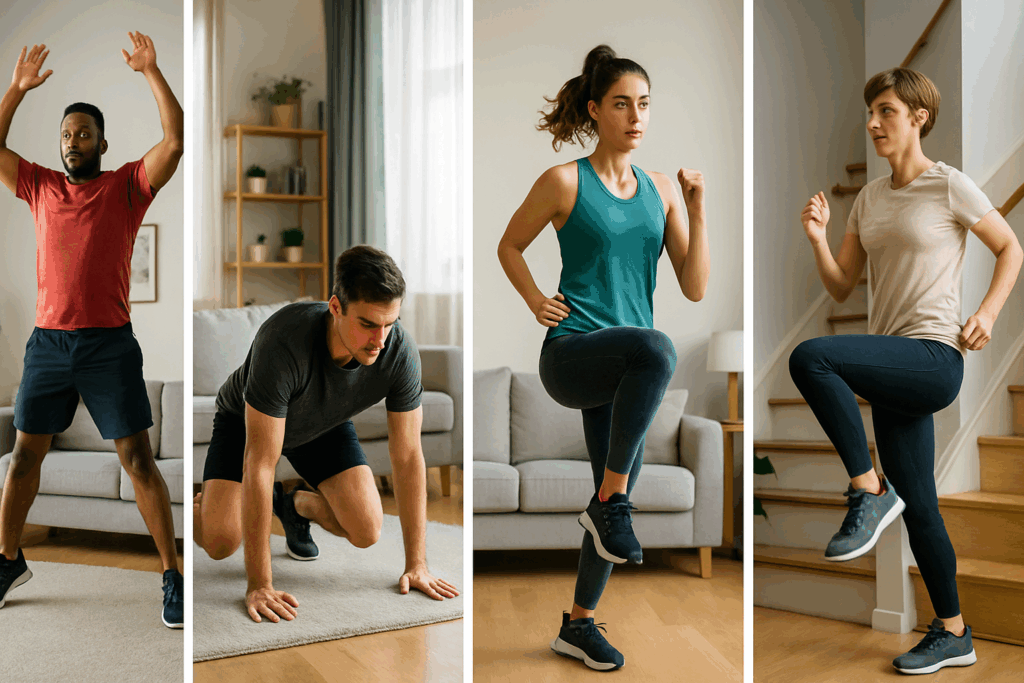
The 5 Best Exercises to Strengthen Your Heart Without Leaving the House
If you’re looking for the 5 best exercises to strengthen your heart from home, consider starting with jumping jacks, burpees, high knees, mountain climbers, and stair step-ups. These movements target large muscle groups and promote a significant increase in heart rate, which challenges your cardiovascular system to adapt and grow stronger. Not only do they support heart muscle strength, but they also improve muscular endurance and coordination.
For beginners, modifications can be made by lowering the impact—such as stepping instead of jumping—and gradually increasing intensity over time. Performing these exercises three to five times a week can make a measurable difference in heart health and aerobic capacity. Importantly, these movements require minimal space, making them ideal for small apartments or shared living spaces.
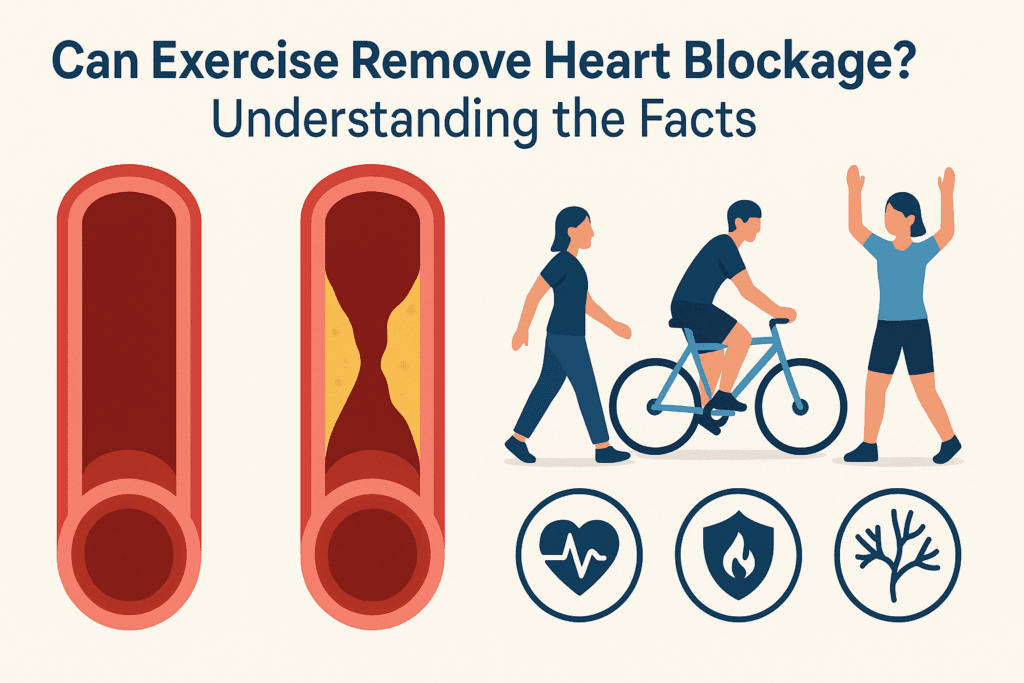
Can Exercise Remove Heart Blockage? Understanding the Facts
One of the most common misconceptions in cardiovascular fitness is the idea that exercise alone can “remove” heart blockage. While it’s true that regular cardio workouts dramatically reduce risk factors for heart disease, they don’t literally dissolve plaque in the arteries. Instead, what cardio does is help stabilize that plaque and reduce inflammation in the blood vessels. It also promotes the development of alternative pathways for blood flow—called collateral circulation—around partially blocked arteries.
So, when people ask, “which are the exercise to remove heart blockage?” the more accurate question is, “which exercises support overall cardiovascular health and reduce further risk?” The answer includes regular cardio exercises at home such as walking, light jogging, or cycling. These routines, especially when paired with a healthy diet and medical guidance, contribute meaningfully to heart health and long-term prevention.

Does Exercise Lower Heart Rate? The Power of Cardiac Efficiency
Yes, exercise does lower heart rate over time—but not in the way many people assume. When you consistently engage in a cardio routine at home, your heart becomes more efficient at pumping blood. This means fewer beats are needed to deliver the same amount of oxygen to your muscles, resulting in a lower resting heart rate. A lower resting heart rate is associated with better cardiovascular fitness and a decreased risk of heart-related events.
For those wondering how to build heart muscle through daily movement, the consistency of your cardio session at home matters more than its complexity. It’s not about doing the most extreme exercises—it’s about doing something, regularly, that gets your blood pumping. Even a 15-minute walk around your home or a short standing cardio session can make a difference if done daily.
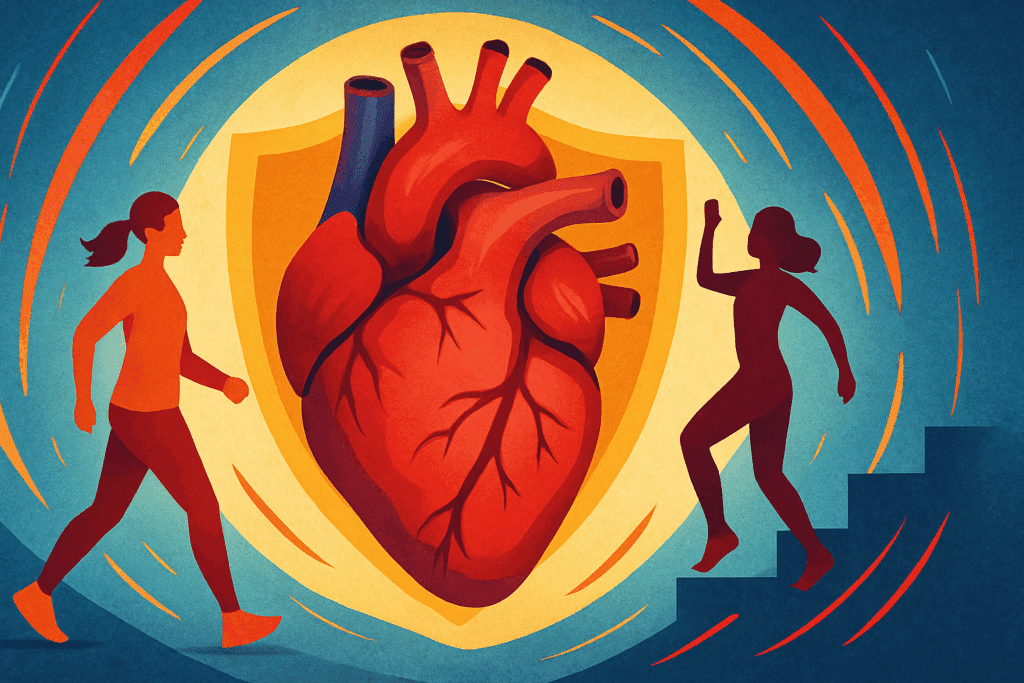
How Does Aerobic Exercise Help Prevent Cardiovascular Diseases?
Aerobic exercise is the gold standard when it comes to preventing heart disease. When people ask, “how does aerobic exercise help prevent cardiovascular diseases?” the answer lies in its ability to improve blood lipid profiles, enhance insulin sensitivity, and reduce systemic inflammation. These combined benefits support arterial health and reduce the chances of atherosclerosis, the condition that leads to blocked arteries.
Incorporating aerobic activities like steady-state walking, dancing, or following an at home cardio workout video can have lasting effects on cardiovascular health. The key is to choose movements you enjoy and can sustain. Over time, the cumulative impact of regular aerobic exercise can extend life expectancy, improve quality of life, and minimize the need for pharmaceutical intervention.
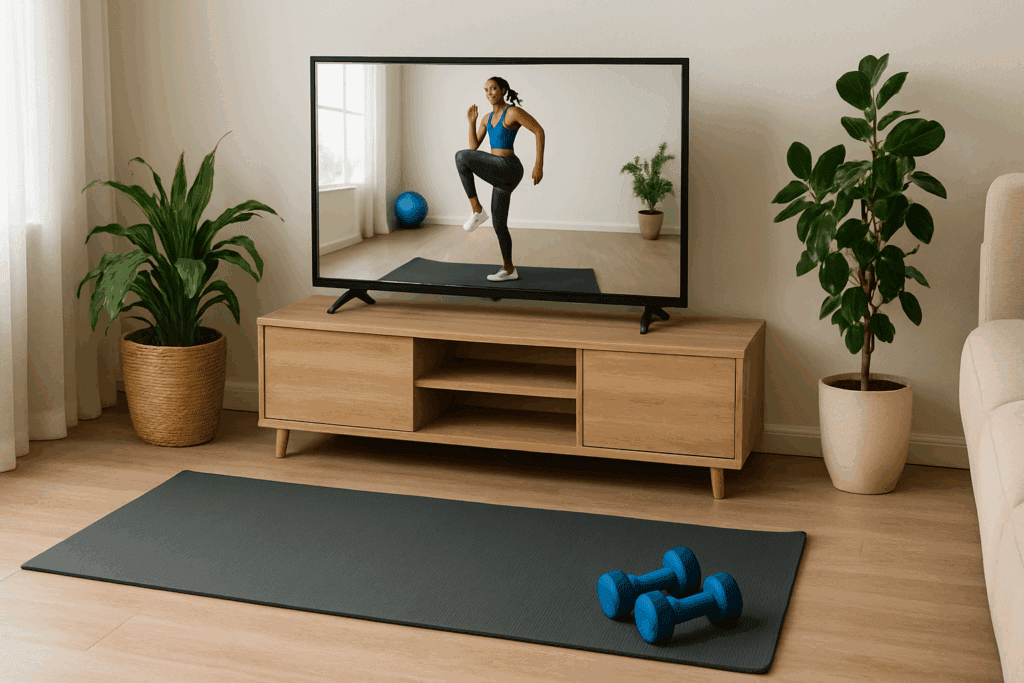
Best Strategies for Staying Motivated with At Home Cardio
Sticking to any exercise program requires motivation, and cardio at home is no exception. One effective strategy is to create a dedicated space in your home where you can move freely and feel energized. Another is to schedule your workouts just like you would any other appointment, treating them as non-negotiable blocks of time.
Technology can also be an ally. Many fitness apps and online classes offer guided cardio exercises at home that feel dynamic and personalized. Whether you’re tracking your heart rate, competing in virtual challenges, or following a video-based home cardio program, these tools can keep you engaged and progressing. Motivation grows when results become tangible—like climbing stairs without gasping for breath or sleeping more soundly after a workout.
Frequently Asked Questions: Advanced Insights Into At-Home Cardio and Heart Health
1. How can I do cardio at home if I don’t have much space or equipment?
One of the most efficient ways to do cardio at home without equipment is to incorporate micro-movements into tight spaces. Standing cardio exercises like arm punches, side steps, or toe taps can easily be performed in a hallway or beside your bed. You can also use everyday furniture creatively—for example, doing incline push-ups against a countertop or using the stairs for intervals. Many people underestimate how a carefully structured cardio session at home can elevate heart rate without needing to run laps or jump excessively. When space is limited, the focus should shift to maintaining a steady tempo and integrating bursts of high intensity to simulate the effects of more expansive cardio workouts.
2. What are some cardiovascular exercises that improve both heart health and coordination?
Combining cardio and coordination can significantly enhance neuromuscular health. Good cardio exercises like speed skaters, mountain climbers, or dance-style movements integrate rhythm and balance, requiring the brain and body to synchronize. These forms of cardio are particularly effective because they stimulate different parts of the brain responsible for motor control and reaction time. Adding complex movement patterns also helps sustain mental engagement during a cardio routine at home, which can prevent workout boredom. Over time, this approach not only supports how to strengthen your heart but also builds a sharper mind-body connection.
3. Can you strengthen your heart by walking only, or do you need more intense workouts?
Yes, walking can help strengthen your heart, particularly when performed at a brisk pace or with added incline. However, to optimize results, it’s often helpful to incorporate more vigorous cardio exercises at home a few times per week. For example, alternating days of power walking with short home fitness cardio intervals—such as squat jumps or stair climbs—can trigger deeper cardiac adaptation. The heart thrives on variety and progressive overload, so even light forms of cardio should be cycled with sessions that push your aerobic threshold. A comprehensive home cardio program should allow the heart to recover while still being regularly challenged.
4. What are the 5 best exercises to strengthen your heart with minimal joint strain?
If joint health is a concern, the 5 best exercises to strengthen your heart may include modified jumping jacks, step-ups, seated punches, standing marches, and elliptical movements (if you own a machine). These exercises provide the cardiovascular stimulation needed to build heart muscle without overloading knees or hips. People looking for low-impact cardio at home often find that combining these movements into a fluid cardio session at home yields strong results without pain. By avoiding hard impacts and focusing on rhythmic motion, these exercises increase blood flow while being joint-friendly. This makes them ideal for aging adults or those recovering from injury.
5. Which exercise increases your heart rate the fastest during a cardio routine at home?
Burpees are widely considered one of the fastest ways to spike your heart rate in a short time. They engage nearly every major muscle group, making them ideal for quick heart-pumping cardio workouts. However, sprint intervals using a jump rope or even high-knees for 60 seconds can also create rapid cardiovascular responses. The secret to these movements lies in their compound nature and speed—they force the heart to work harder in less time. For those wondering how to get heart rate up at home quickly, rotating between these high-intensity drills is a practical and effective solution.
6. How does aerobic exercise help prevent cardiovascular diseases beyond just weight control?
While many people link aerobic exercise with fat loss, its cardiovascular benefits go far deeper. Regular aerobic cardio exercises improve endothelial function, which keeps blood vessels elastic and responsive. They also modulate inflammatory markers like C-reactive protein and promote healthy autonomic function, reducing blood pressure variability. Furthermore, home cardio programs that include consistent aerobic activity are associated with lower LDL cholesterol and improved HDL profiles. This multifaceted effect illustrates how aerobic exercise helps prevent cardiovascular diseases in ways that are not immediately visible but profoundly impactful over time.
7. Is it better to do short, frequent cardio workouts or longer sessions a few times a week?
Both formats have their place, but the choice should align with your goals and lifestyle. Short, frequent cardio sessions at home are easier to fit into a busy schedule and can improve insulin sensitivity and blood flow throughout the day. On the other hand, longer fitness cardio workouts—lasting 30 to 60 minutes—can build endurance more effectively and strengthen heart muscle at a deeper level. For many people, a combination of both is ideal. A home cardio program could include three longer sessions per week supplemented with daily five- to ten-minute standing cardio exercises that keep the heart lightly engaged.
8. How can you strengthen your heart muscle if you’re recovering from illness or surgery?
Recovery calls for a cautious, structured approach to cardio at home. Begin with low-impact forms of cardio like slow walking, gentle step touches, or breathing-focused routines that maintain circulation without overexertion. Once cleared by a physician, gradually build up to more traditional cardio workouts with an emphasis on duration rather than intensity. Incorporating deep diaphragmatic breathing can also support oxygen delivery to tissues, enhancing your body’s ability to recover and rebuild. This type of home fitness cardio is not just about movement, but about restoring the body’s resilience in a controlled and mindful way.
9. What makes a cardio workout truly effective for building endurance at home?
To build endurance, a cardio workout must push the body beyond its current limits for an extended period. That doesn’t always mean going faster—it can also mean increasing duration, minimizing rest, or adding complexity to movements. Good cardio exercises like fast step-ups, alternating lunges, or compound moves like squat-to-press variations can be included in a rotating cardio routine at home to target both cardiovascular and muscular endurance. The goal is to stimulate your heart just enough to adapt without overreaching. Tracking your perceived exertion and aiming for progressive increases helps ensure long-term improvement in stamina.
10. Are there any home-based forms of cardio that support arterial health and potentially reduce blockage risk?
While exercise doesn’t remove plaque directly, certain forms of cardio performed consistently can reduce inflammation, improve lipid profiles, and enhance blood vessel dilation. For example, moderate-intensity at home cardio workouts such as stair climbing, brisk housewalking, or stationary jogging help improve nitric oxide production—a key factor in arterial flexibility. If you’re asking which are the exercise to remove heart blockage, it’s more accurate to focus on how to strengthen your heart and reduce future blockage risk. Combining movement with a heart-healthy diet rich in omega-3s, fiber, and antioxidants amplifies these effects. In this sense, cardio at home becomes part of a broader vascular care strategy.
Conclusion: Strengthen Your Heart and Build Endurance with Every Beat
The path to a healthier heart and enhanced endurance begins not in a gym, but in your own living room. Through thoughtfully selected cardio workouts, you can improve cardiovascular function, boost daily energy levels, and support long-term health—all without needing expensive equipment or complicated routines. Whether you’re following a structured home cardio program or simply integrating standing cardio exercises throughout your day, consistency is key.
If you’ve been asking how to get cardio exercise at home, how to strengthen heart muscle, or what are some cardiovascular exercises that fit your life, this article offers the tools and understanding to begin. The 5 best exercises to strengthen your heart don’t require fancy gear—just your body, your breath, and your commitment. From brisk stair steps to high-intensity intervals, each cardio session at home is a step toward a stronger, more resilient you.
So lace up your sneakers, roll out your mat, or simply start marching in place. Your heart is ready to grow stronger. And with every heartbeat, you’re not just exercising—you’re building a future grounded in strength, vitality, and wellness.
Was this article helpful? Don’t let it stop with you. Share it right now with someone who needs to see it—whether it’s a friend, a colleague, or your whole network. And if staying ahead on this topic matters to you, subscribe to this publication for the most up-to-date information. You’ll get the latest insights delivered straight to you—no searching, no missing out.
Further Reading:
3 Kinds of Exercise That Boost Heart Health

